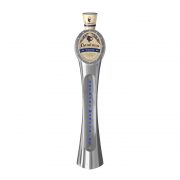4 months ago Since the Middle Ages, hops (Humulus Lupulus) have been included as one of the 4 essential ingredients used in brewing beer, along with water, cereals and yeast, greatly improving the Belgian national beverage. Hops are the flowers of an aromatic plant of the cannabaceae family, well known for their fragrance and taste as well as their medicinal virtues, which include antiseptic, digestive and relaxing properties. A perennial climbing plant that can reach up to 10 meters, the hop plant is believed to have originated in Western Asia, slowly migrating into local regions through world explorations and discoveries. It also existed in Central America. It was used to prepare infusions, as a vegetable and in traditional medicine. Primarily it was the medicinal properties and the role they played improving the preservation of beer that determined their success over the centuries, inciting brewers to adopt hops instead of the spices cinnamon, nutmeg or ginger that had been commonly used for flavouring the traditional cervoise. But what distinguishes one beer from another is its hops content with respect to the other ingredients and the moment in which hops are added into the liquid during brewing. In simple terms: when hops are added at the beginning of the boil, they will release more of their acid components which will yield a more pronounced final note of bitterness to subtly balance the sugars obtained from the malt. If hops are added at the end of the boiling process, this will strengthen the aroma of the beer and the taste will be less bitter. Tell Me Which Hops are Yours Aroma all depends on the nature of the hops and the degree of bitterness found in their natural state (which depends on the quality of the cone-shaped flower buds, specifically the lupulin, and a kind of resin that surrounds the bud). There are many varieties of hops, with their aroma ranging from minty to fruity (citric or sweet) or woody and having no specific link to the degree of bitterness Widely planted in the past, hops have been present in Brabant since the 14th century. Typically high quality Belgian hops have been largely exported especially to England, a country with whom Belgium shares longstanding brewing ties as those maintained by the Anthony Martin group. The United Kingdom still possesses “historical” Belgian cultivars, and is today sending these back to help Belgium regenerate the crop. Some small brewers are proud to use their own “indigenous” hops and to restore the ancient local cultivars to the rich and humid Belgian soil, perfectly suited to the hop. While Belgian production may have diminished in terms of quantity, there has been no loss in terms of quality! Poperinge is still the home of specialty family farms. Large scale production is supported by importing hops from Germany or the USA, who are the biggest producers in the world (while waiting for China?), or from the Czech Republic, the cradle of the Pilsner. If all beers contain hops, why do we refer to “hopped beer” in some case and not in others? This is determined by the degree of bitterness obtained during brewing and calculated scientifically in EBU or IBU (European or International Bitterness Unit). A brewer measures the bitterness he wishes to attain for his beer, based on 1mg alpha acid, the bitter agent of hops, per litre of beer. This calculation considers the type and quantity of hops added and the boiling time. Tables define this rate according to the style of beer to be produced. For example, a slightly bitter pils will show an IBU level of 10 to 20, while an IPA with a fairly pronounced hops taste may turn up to 40, 50 IBU. Some “extreme” beers have an IBU of 150, and a Danish brewer is purported to have produced a beer indicating a rate of 1000! At this IBU level, the bitterness becomes such that these beers unfortunately no longer have a balanced taste, and they become unbearable. Here are a few examples of high-quality EBU levels in Belgium: Martin’s IPA 40, Gordon Scotch 37 or Guinness Stout (Special Export). Some American IPAs have as much as 100 EBU, but they are often loaded with sugar, which in turn reduces the sense of bitterness. Moreover, they use mostly aromatic hops, less bitter. Conversely a Martin’s Pale Ale for example or an Orval have a raw hopping, which tends to be more bitter than a conventional hopping, creating a bitterness is then more balanced, although well asserted. Tags hopIPAPale Ale info@sweetglobe.be
Share:Original Source Here

